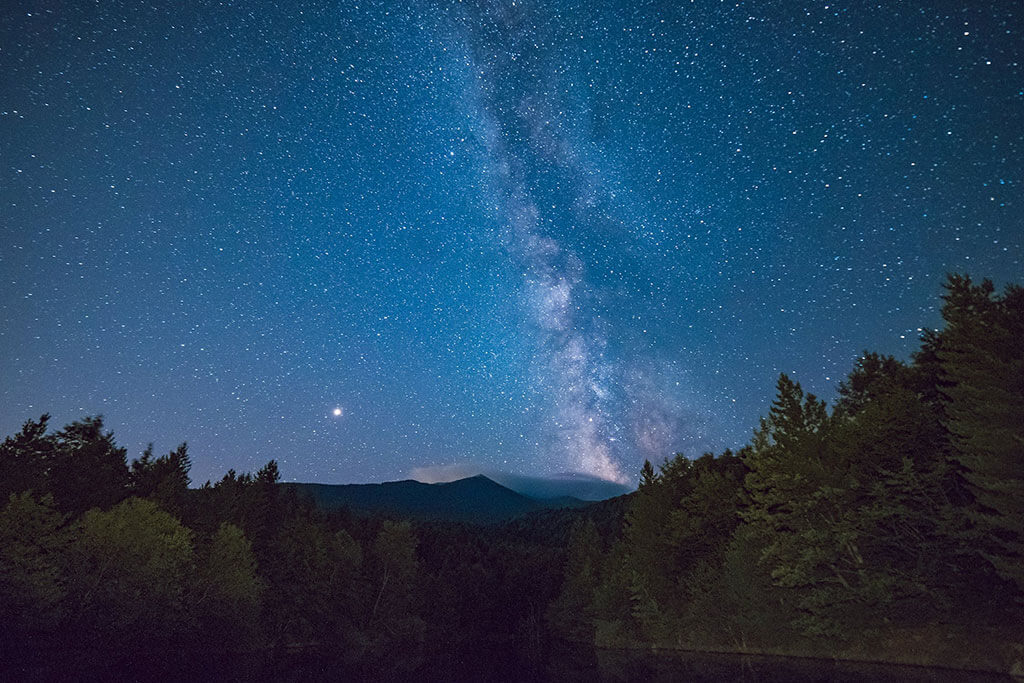
3
May
UofT Physics: The H.L. Welsh Distinguished Lecturer Series Program 2018
The Department of Physics invites faculty, students and the public to its 44th annual celebration of physics.
The Welsh Lectures in Physics have been held annually since 1975 in honour of H.L. Welsh, a distinguished former faculty member in the Physics Department. They are the major public event in the life of the Department of Physics and are intended to celebrate discoveries in physics and their wider impact. They are intended to be broadly accessible to an audience drawn from across the university, other academic institutions and the interested public.

3
May
UofT AstroTour: Simulating the Universe
The life of a single galaxy is an extremely complicated affair and understanding the origin and evolution of the roughly 100 billion galaxies in our universe is even more so. But through heroic telescope surveys and state-of-the-art computer simulations, cosmologists have been progressing on this problem at an ever increasing rate. In this talk, George Stein will discuss current efforts to create realistic galaxies using some of the largest supercomputers on the planet, and will show what these simulations mean for future observations.

4
May
Dunlap Institute: Astronomy on Tap T.O.
Quench your thirst for astronomy!
On Friday, May 4, at The Great Hall! It'll be another fun evening of pints, astronomy news, mind-expanding talks, games, prizes, and Dunlap merchandise for sale!
Plus, following all the talks, there will be plenty of time for you to have all your cosmic questions answered by astronomers from the Dunlap Institute and the University of Toronto.
We'll see you there!

11
May
RASC Mississauga: Earth's Battered Moon
Just like the Earth, the Moon is about 4.5 billion years old. It has been and continues to be constantly bombarded by meteorites. Some suggest that this rate of bombardment has remained constant in the past couple of billion years. The Moon’s surface without any substantial atmosphere or tectonic activity serves as a time capsule, helping us detangle Earth’s history. The only way to see if the bombardment rate has changed is to have an age for every single crater, an extremely difficult task using traditional crater dating methods.

23
June
DDO Family Night (WAITLIST)
This weekend tour introduces families to the wonders of astronomy through an indoor planetarium experience, craft activities for younger visitors and stargazing. Visitors will spend time in both the main building and observatory visiting the 1.88m (74") telescope, learning its history and getting to see celestial objects firsthand (weather permitting).

5
July
OSC: International Day of LGBTQ+ People in STEM
Join us as we recognize the first International Pride in STEM day with an afternoon of activities and a Science Slam featuring LGBTQ+ speakers.
At the Ontario Science Centre, we hope that the International Day of LGBTQ+ People in STEM will help create an accepting STEM environment, improve LGBTQ+ visibility and representation in STEM fields while strengthening the community, improve support and resources for LGBTQ+ people in STEM and encourage LGBTQ+ youth to continue with STEM subjects and pursue their dreams.

5
July
Propeller Gallery: Out Of This World - Opening Reception
(with telescopes! weather permitting... and astronomically-themed music from the 17th and 18th centuries)

5
July
The Story Collider: LGBTQ+ in STEM
This July, in celebration of the first international LGBTQ STEM Day, The Story Collider will present five true, personal stories about science from members of the LGBTQ+ community.

7
July
Open House and Awards Picnic at the E.C. Carr Astronomical Observatory
Toronto Centre members and their families are cordially invited to attend the 20th Annual Carr Astronomical Observatory (CAO) Open House and RASC Toronto Centre Awards Picnic on Saturday, July 7th, 2018.

7
July
DDO Family Night (WAITLIST)
This weekend tour introduces families to the wonders of astronomy through an indoor planetarium experience, craft activities for younger visitors and stargazing. Visitors will spend time in both the main building and observatory visiting the 1.88m (74") telescope, learning its history and getting to see celestial objects firsthand (weather permitting).
